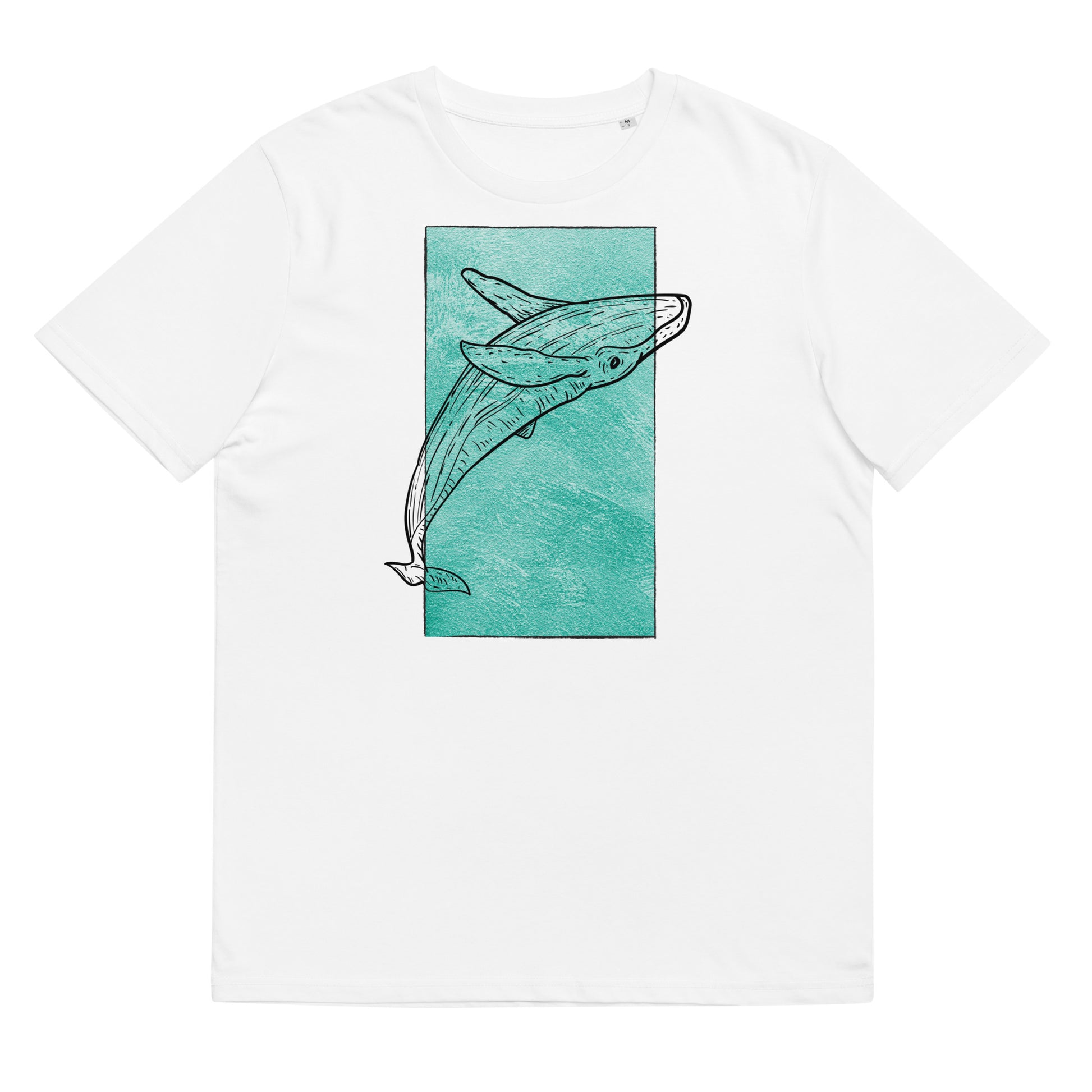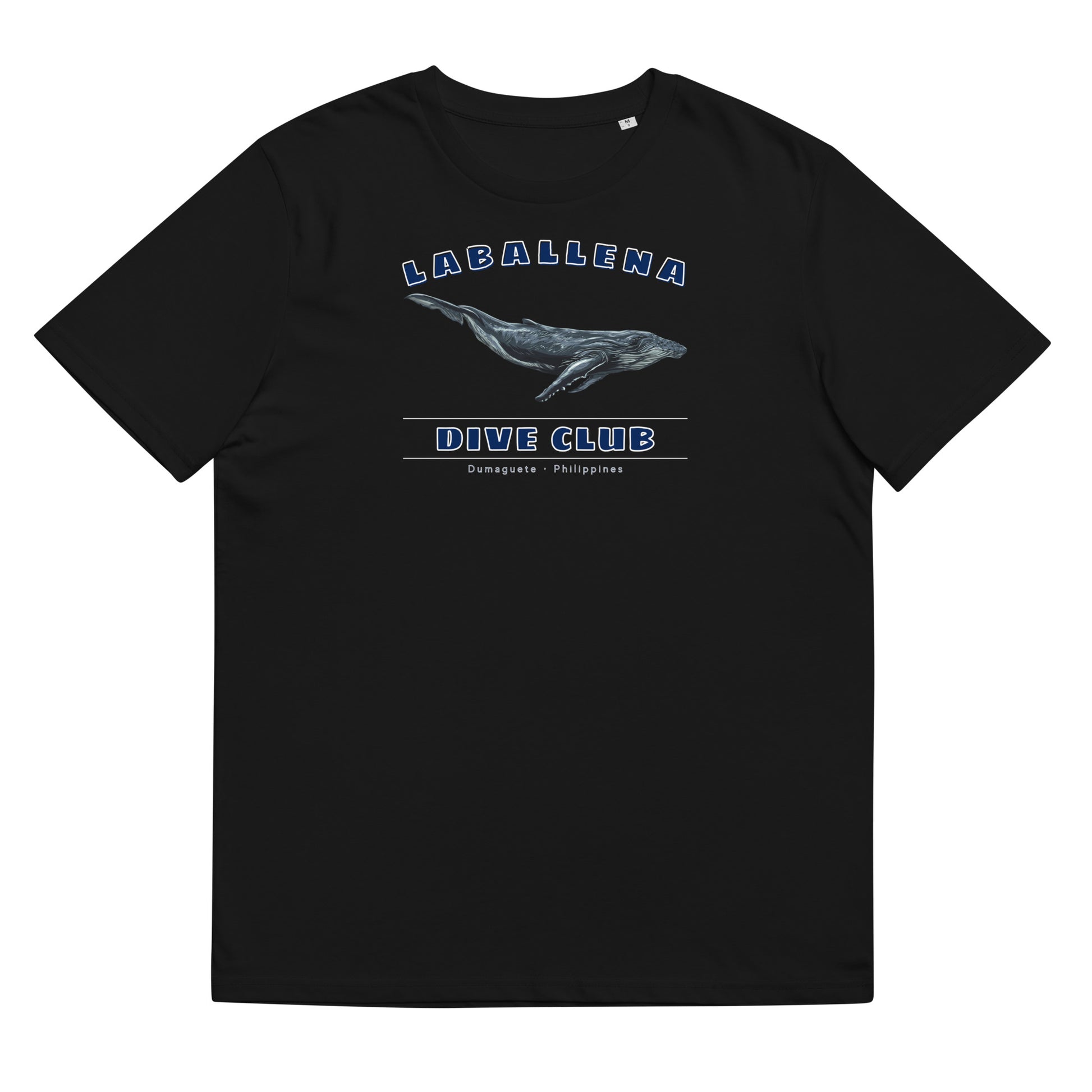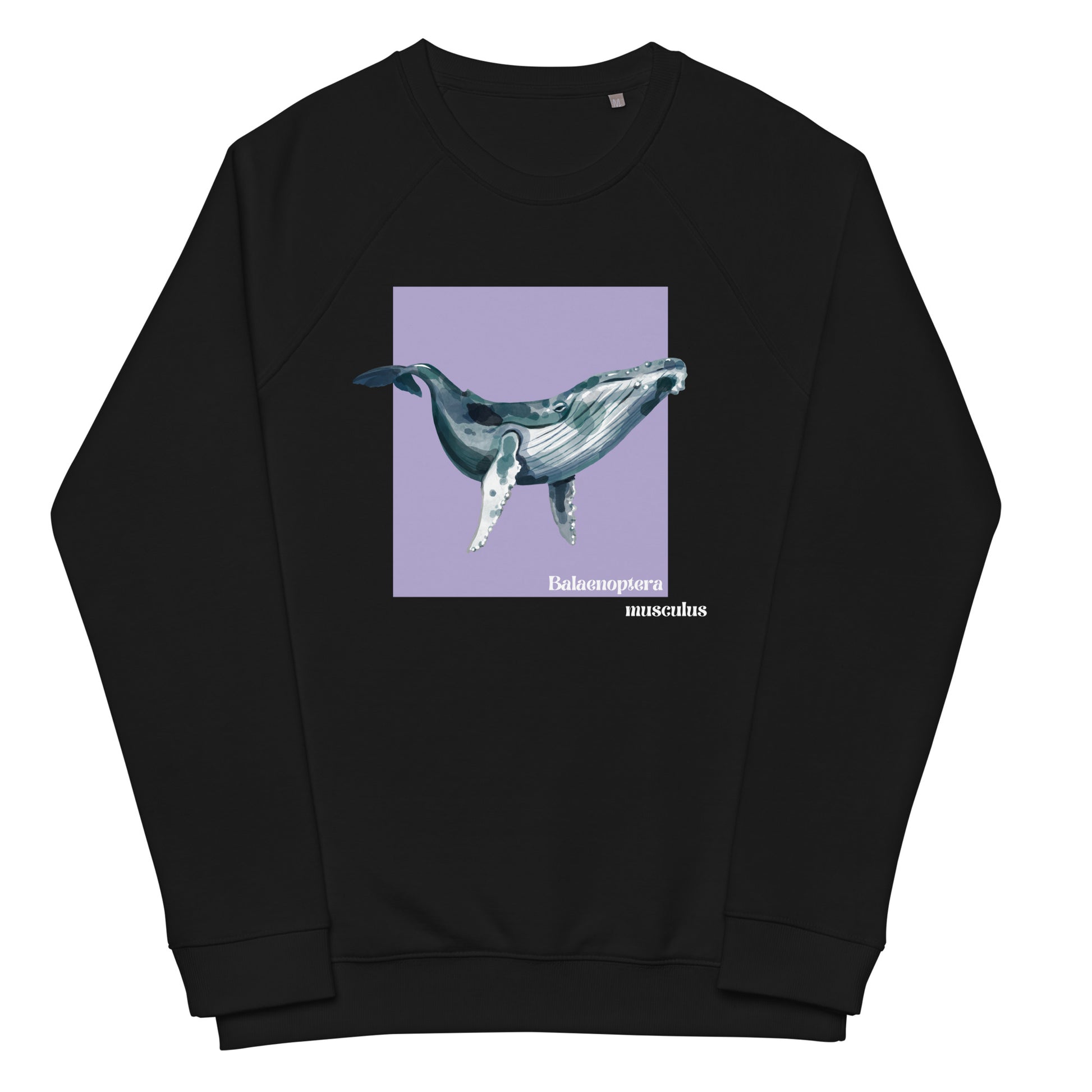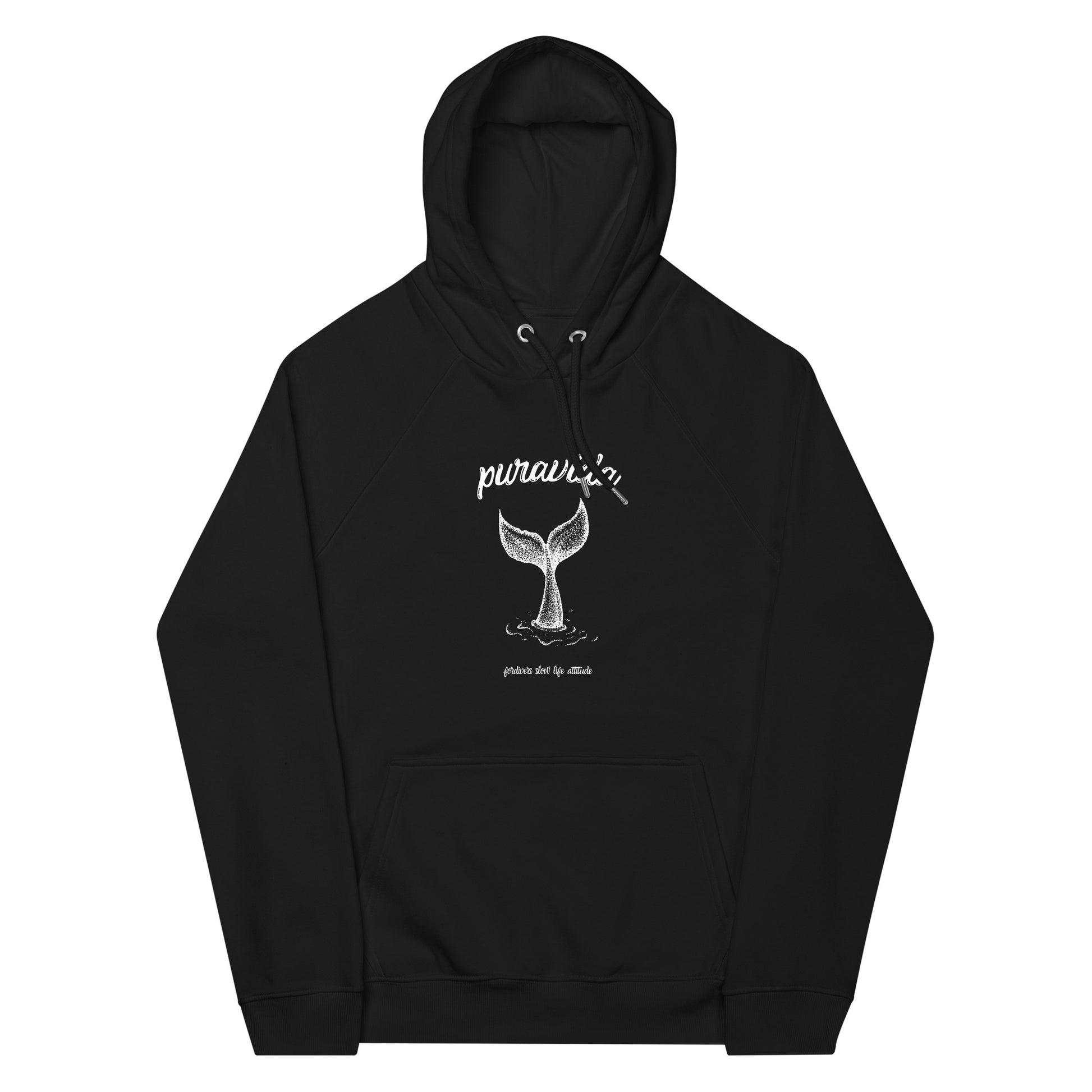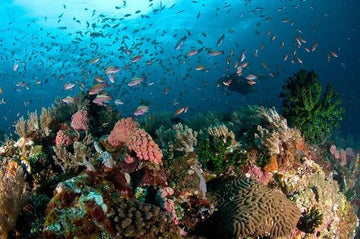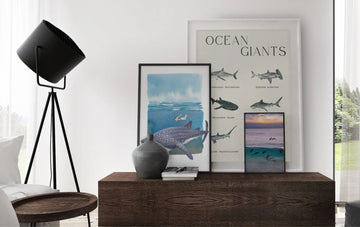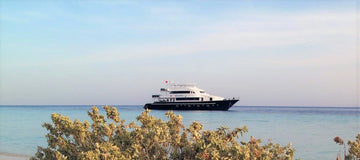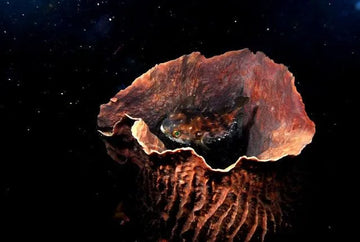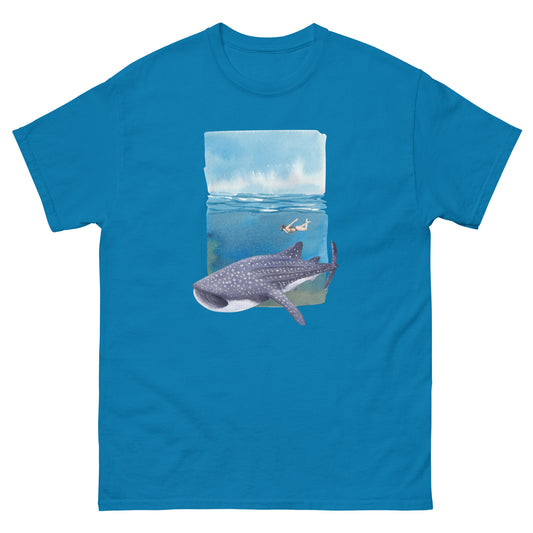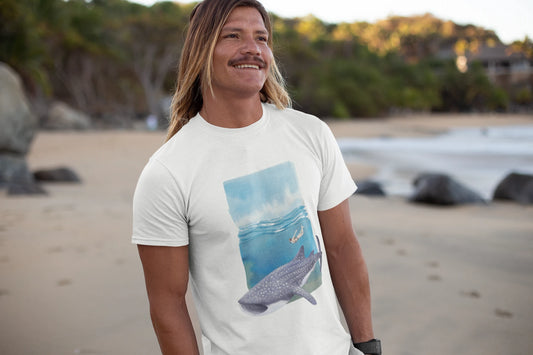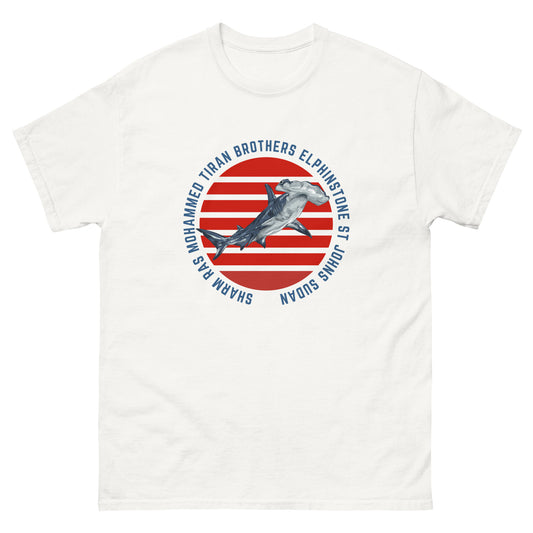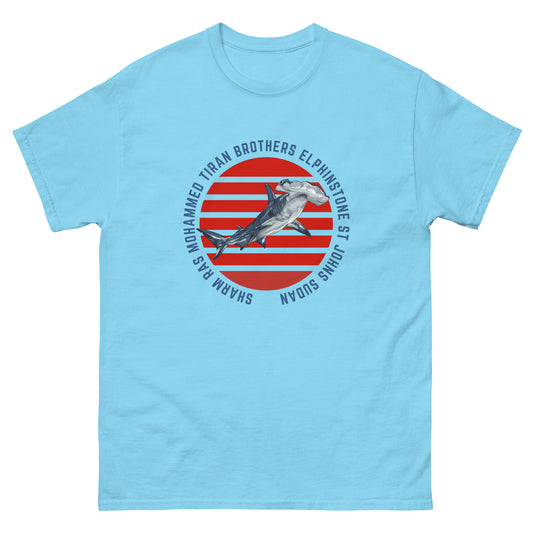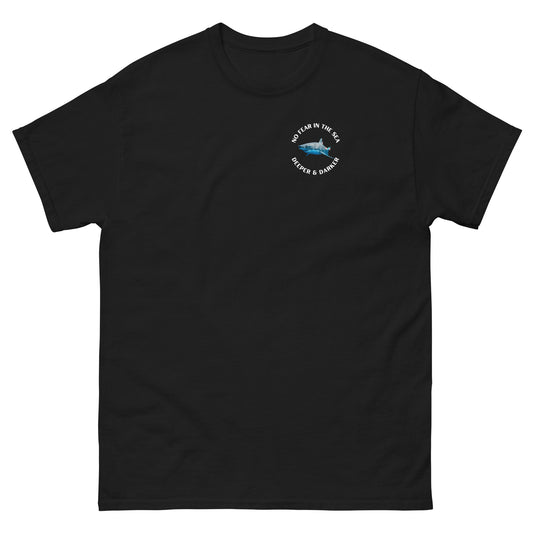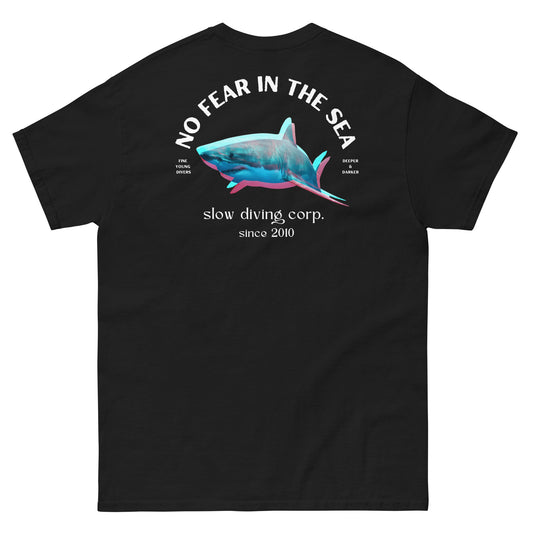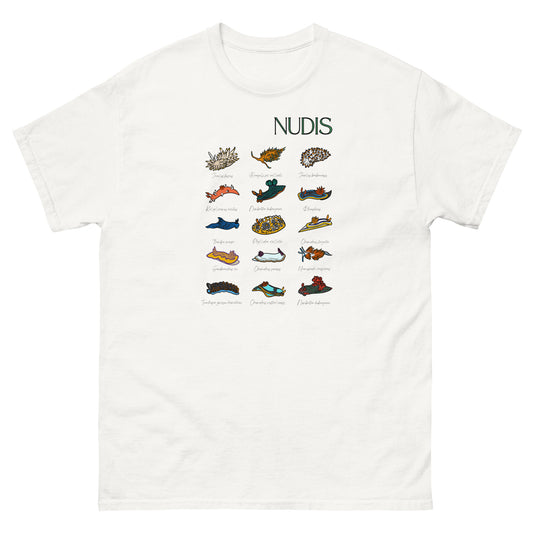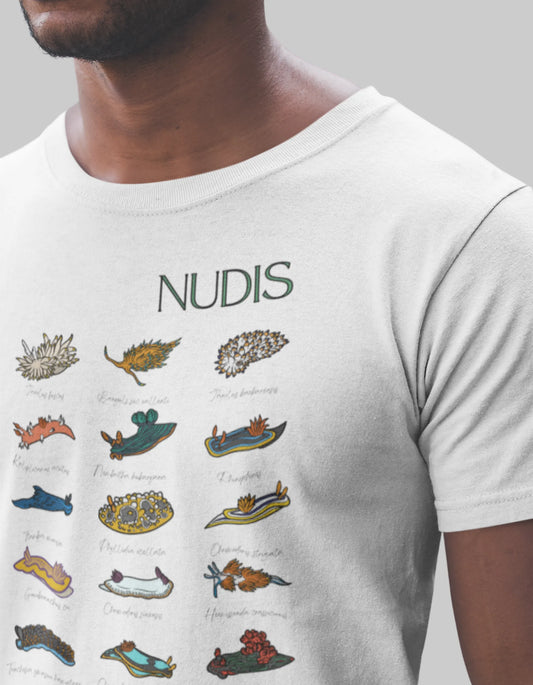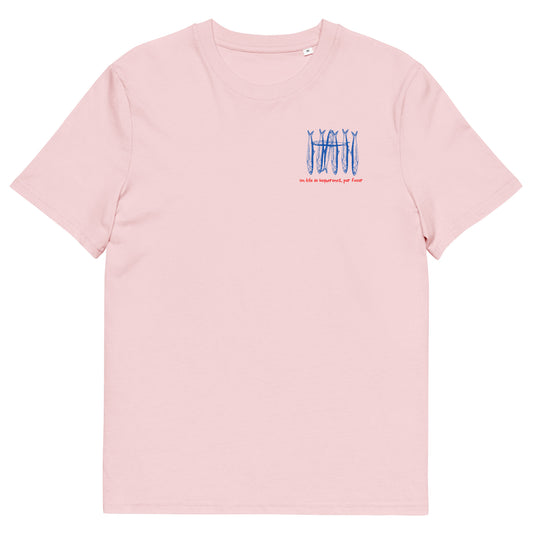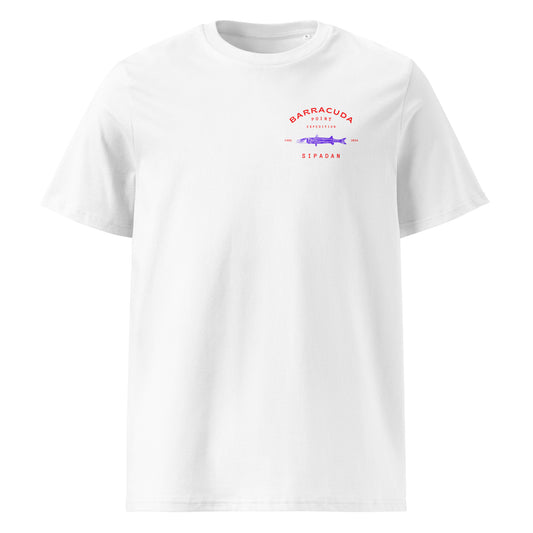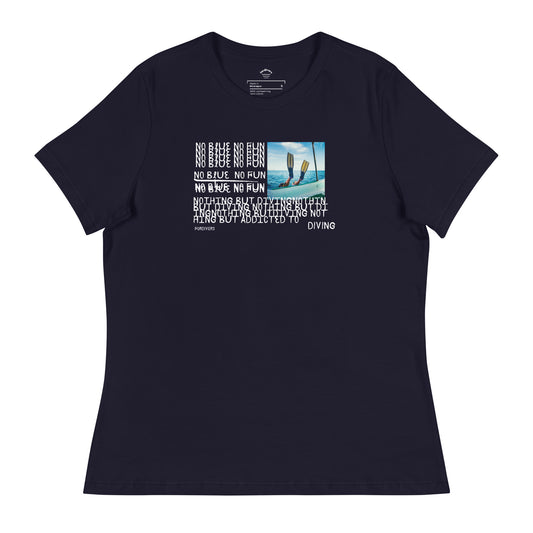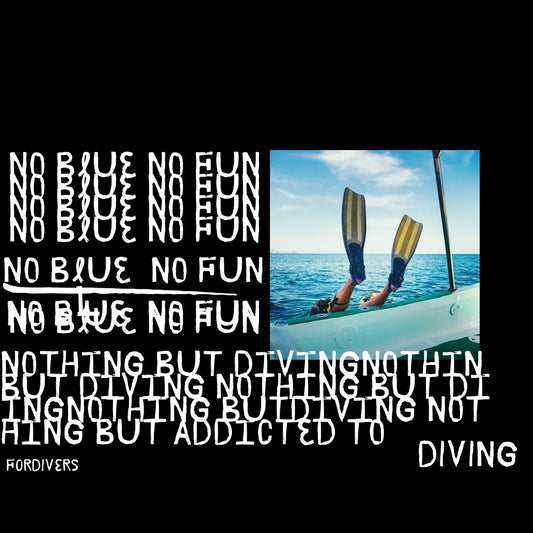The blue whale (Balaenoptera musculus) belongs to the rorquals family, family that also includes the humpback whale, the fin whale, the Bryde’s whale, sei whale and the minke whale. The blue whale is the largest animal that has ever existed. The blue whale’s body is conical and very hydrodynamic, with a large head measuring a quarter of its total body length. The top of the head is very wide, flat, almost U-shaped, with a strip extending from the nostrils to the tip of the mouth.
T-shirts for Whale Lovers
SEE MORE WHALE T-SHIRTSTheir nostrils are large and high allowing the whale to expel water to a height of 6 meters when breathing. Blue whales have soft skin is almost without any clefts what, unlike other whales, lets it be free of parasites, which can only be found at the tips of the fins. The blue whale has between 55 to 68 ventral grooves or pleats extending from the lower jaw to near the navel.

Blue whale, the biggest animal ever existed on Earth
The blue whale’s skin, as its name suggests, is blue with gray tones and has dark blue and gray spots. The bottom of the fins may be of a lighter color or white, while the flow is darker. The belly of this whale is yellowish green because of diatoms, microscopic unicellular algae that fix on it when traveling on the cold waters of the Antarctic, North Pacific and North Atlantic.
Its dorsal fin is triangular and curved, small (only 30 inches long), and is located near the tail fin. This fin is inclined and is relatively short, corresponding approximately to 12% of the total body length.
The largest blue whale ever recorded was an adult female of 32 meters length captured by a whaler in the Antarctic in the 1950´s. Today the Southern Hemisphere blue whale reaches lengths up to 30 meters and those who live in the Northern Hemisphere tend to be smaller, between 23 and 24.5 meters, and can weight up to 150 tons.
Blue whales feed almost exclusively on small creatures such as euphausiids or krill. During the summer season the blue whale is «cramming» of food, eating an astounding 4 tons each day, so it can eat up to 40 million krill in a single day. The blue whale has between 260-400 fringed overlapping or beards hanging from each side of the upper jaw. These beards are composed of keratin (the same material composing our nails) and are used to filter water charged krill.
Show Your Love for Whales
SEE MORE WHALE SWEATSHIRTSThe blue whale produces powerful low frequency sounds that can be felt and heard from miles away, which they use to communicate. Although no one knows exactly what they communicate with these sounds, are believed to have six meanings: maintenance of interindividual distance, species recognition, contextual information transmission (power, danger or courtship), maintenance of social organization, location of topographic features and position of potential prey sources.
Recent research indicates that blue whales reach sexual maturity between 6 to 10 years of age, or when males reach 23 meters long. The young blue whales are born at intervals of 2-3 years and gestation lasts about 12 months. During the nursing period, pups are feed with around 380 liters of milk daily gaining 90 kilos of weight every day!

Blue whales can be found in every ocean of the world and make long migrations to tropical waters during the winter months to mate and give birth to their young. Although they may be found alone or in small groups, it is more common to see blue whales in pairs; although sometimes they are found in larger groups, being the largest registered group from 50 to 60 individuals. Blue whales are fast swimmers able to reach 30 miles per hour when they feel threatened, but normal cruising speed is 12 mph.
OVER ONE CENTURY OF HUNTING
Because of its enormous size and speed blue whales were safe from early whalers, who could not follow them in their primitive boats and hand harpoons also used at that time for hunting. But in 1868 a Norwegian captain, Sven Foyn, revolutionized the whaling industry with the invention of the harpoon gun. This new technique, coupled with the use of steamers and diesel engines, made blue whales main target of whalers almost to the extinction of this mammal. The whalers also improved the process of «inflated» air of dead whales to not sink after being harpooned and making them easier to carry to land.
The industry of whaling began to focus on blue whales after 1900 because a 27-meter whale could produce up to 120 barrels of oil, providing enormous profits, which started a “wild” hunting of these whales. The slaughter peaked in 1931 when more than 29,000 of these whales were killed. In the mid-twentieth century it was difficult to find a blue whale in the ocean and the whalers had to focus on other whales to continue with the industry.
In 1966 the International Whaling Commission banned hunting of blue whales and gave them worldwide protection. The recovery has been extremely slow and only in recent years there have been signs that the number of blue whales is increasing. Before mass hunting of these whales started their number is estimated in more than 350,000 and it is believed that in less than a century 99% of the specimens were killed. Today there is an estimated 5,000 to 10,000 blue whale population living in the southern hemisphere, and only 4,000 in the Northern Hemisphere.


